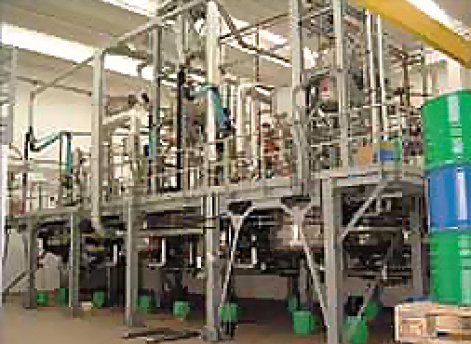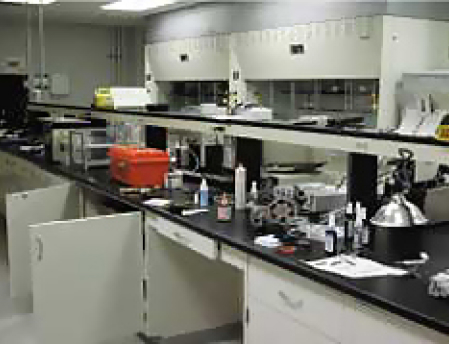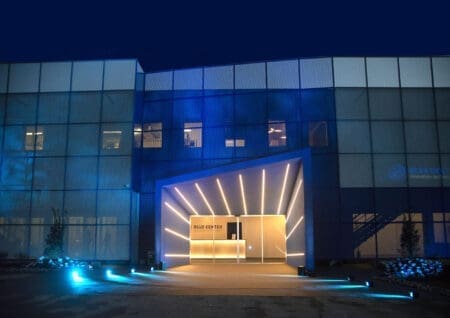
Permabond’s history of developing and manufacturing engineering adhesives spans seven decades and three continents. Today, our international team provides technological solutions to engineers all over the world, with offices and facilities in The Americas (Permabond LLC and Permabond de Mexico), Asia-Pacific and Europe (via Permabond Engineering Adhesives Ltd, Permabond Engineering Adhesives GmbH, and Permabond Shanghai), backed by two high-tech ISO 9001 certified production plants in Europe.
Permabond’s story began in the UK, early in the 1960s. For years, manufacturers had had no choice but to rely on mechanical means of locking nuts and bolts. However, their high rate of failure due to equipment vibrations required a more reliable means of locking fasteners on equipment and finished goods.
Chemists at Borden Chemicals (UK) seized this opportunity to develop a special anaerobic adhesive sealant that cured to a solid plastic when used between metal surfaces in the absence of oxygen. As predicted, these adhesives were well received by the manufacturing sector, and business expanded rapidly.
Avdel Ltd spotted this growth and quickly moved to purchase this business from Borden Chemical. As the business continued to grow, they moved to a larger facility on Woodside Road in Eastleigh. The market for adhesives and sealants that could meet the engineering needs of industry was apparent, even at this early date. Avdel invested heavily in Research & Development, creating a number of anaerobic products to seal threaded pipes and fittings, retain bearings and press-fit parts, and form-in-place gaskets.
Meanwhile, in Florida, United States, three men in the jewelry distribution business ‘accidentally’ discovered cyanoacrylate adhesive and its ability to bond pearls into jewelry. They formed a company called Pearl Chemical and sold cyanoacrylate adhesive for this purpose. One of the three owners came up with the idea to suspend a farm tractor from a crane, held by nothing except a drop of cyanoacrylate! The picture was used on some of the earliest cyanoacrylate packaging.
National Starch & Chemical had been looking to enter the adhesives market to compete against Loctite. To realize this goal, it seized the opportunity to purchase the Pearl Chemical cyanoacrylate business, as well as the anaerobic adhesive business, Avdel.
They established a packaging plant in 1976 in Englewood, New Jersey and in 1977 production switched from Florida to Bridgewater (NJ). This involved massive investment in new equipment for producing both anaerobic and cyanoacrylate adhesives.
‘Permabond’ was the name chosen in 1978 for the consolidated groups of anaerobic and cyanoacrylate adhesives business in the US and UK. With the additional cyanoacrylate technology purchased from Eastman (US), Permabond made inroads into the jewelry and machinery maintenance industries as well as into the automotive, electrical, medical, and aerospace markets. Permabond’s development chemists were rapidly making a number of breakthrough products in cyanoacrylate chemistry with ultra-high-speed, metal bonding, and low-odor grades. This same era saw the introduction of the first toughened cyanoacrylate, Permabond 737. Another key product innovation was Gaseal®, an anaerobic sealant used to seal leaking gas mains. New adhesive technologies quickly entered the arena – epoxies in 1979, two-part acrylic adhesives in the early 1980s, and UV-curable adhesives in 1994. In 1996, chemical giant ICI took over National Starch & Chemical and its businesses, including Permabond. As is common with corporate giants, a change in executive leadership resulted in a decision to divest itself of the Permabond brand name and several product technologies along with other chemical companies.
In 2003, the Permabond business was purchased by the Grossi family, involved in Structural Adhesives Technology since the early 1970s. The new acquisition added extra value to Permabond in terms of investment, technology, and manufacturing capacity, as well as a big injection of fresh enthusiasm from the new management team. Their passionate focus on innovation brought more than 30 new products to the Permabond range during an 18-month period.

The Grossis’ continued investment in technology is fuelling tremendous product line growth. The need for new adhesives and new adhesive technologies results from engineered designs for smaller and lighter devices using new materials from constantly evolving technological advancements in plastics, alloys, and innovative composites. Permabond works with design, process, and manufacturing engineers to identify and develop solutions from adhesive chemistries.
A brand new R&D hub, the Blue Center Innovation Technologies, was opened near Milan, Italy, in 2018 to provide a base for developing innovative and technologically advanced products that provide bonding solutions to industry. In addition to The Blue Center, we also opened Permabond de Mexico and Permabond GmbH.

Permabond continues to invest in technology as well as the environment. Patents for new unique products have been obtained, and several are pending. Industry drivers for this new technology include requests for higher heat resistance, lightweight expandable battery fillers, and bonding low surface energy plastics. Permabond is also highly committed to the environment and is switching 850,000 kWh from standard to photovoltaic power with the aim of reducing its CO2 emissions.
The focus is very much a global effort with business plans to expand service through a strong network of worldwide distributor relationships and to continue to provide world-class technical expertise and good service to customers.